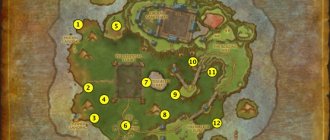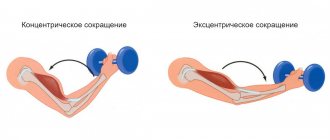What is better, running or walking for weight loss?
Some people find walking ineffective for losing weight and therefore choose running.
But walking is definitely healthier for your health. While running, there is a load on the spine, lungs, heart, and joints. The heart undergoes training, breathing becomes deep and rapid, blood flows through the veins more actively, and the lungs open. And all this speeds up the process of burning calories that entered the body during the day. You need to run at least 20 minutes a day. It is during this time that the energy components contained in the liver and muscles will begin to be burned. This means that the body will need more energy, and it will take it from subcutaneous fat. Gradually, the duration of the races should be increased.
Running with breaks is also effective. That is, fast running should be alternated with slow walking. In this case, weight is lost and the cardiovascular system is trained. If a person walks for a long time, even at a slow pace, the blood sugar level changes. When reserves are depleted, the process of lipolysis turns on and fat begins to break down, releasing water, energy and carbon dioxide. A person sweats, and all together speeds up metabolism.
Metabolism is the exchange of substances and energy in living organisms.
Source Wikipedia
To lose weight, it is important that energy is consumed as quickly as possible. And physical activity for 1 – 1.5 hours will help with this. To lose weight faster, of course you should choose running, but it is not suitable for everyone.
Walking is less effective. To achieve a positive result, you will have to walk at a fast pace. But in any case, the effectiveness of running and walking is undeniable.
Is it possible to compare?
To help you decide which of running and walking is better, which is more effective, we suggest analyzing both types of movement separately, identifying the common features and identifying the differences. Then it will be easier to understand what is needed and why. Go!
Walking
This is our main movement - moving the legs relative to a horizontal surface. You can walk slowly, barely moving your legs, at a speed of 1–2 km per hour. You can go faster; the average speed for walking is considered to be 5–6 kilometers per hour. And you can walk very quickly, up to race walking, the speed of which exceeds 10 kilometers per hour.
By the way, physiological indicators during race walking are similar to the parameters of the body during jogging and even faster running.
We conclude that you can walk in different ways. And each method and speed will have its own effect.
Fast walking is useful for 1 hour a day. Anyone who accumulates a total of 1 hour of walking per day and thinks that he is getting the maximum benefit is a little wrong. When they say that walking an hour a day is beneficial, they mean continuous walking. This is a cardio workout. Remember how you breathe when walking intensively - accelerated. And how your heart behaves – it speeds up. Thus, brisk walking, like running, can provide cardio exercise.
There is such a type as Nordic walking, with sticks in hands. Each step is accompanied by alternate raising and lowering of hands with sticks. This is healthier than regular walking, as the arm muscles are involved in the work. Hand movements make breathing easier, the lungs open more. This means that the body receives better aeration than when walking without poles.
For sporting purposes, it is best to walk in forest areas and parks. In general, it is better to walk where there are no cars, where there is still fresh air. You should not walk where there are strong odors, for example, near poultry and livestock farms. An unpleasant odor can be harmful to your well-being; you need to enjoy the air!
Walking will help you lose weight. To start losing weight, all you need is brisk walking and proper nutrition. Progress will improve, you just need to be patient.
Difference between walking and running
How is walking different from running?
- When you run for more than 25 minutes, the fat burning process begins to work. The body uses all the sugar in the bloodstream;
- During running, a heavy load is placed on the cartilage tissue;
- While running in a stressful state, a person receives psychological relief, and when walking this load is much less;
- When walking, many muscle groups are involved: shoulders, buttocks, legs;
- You can walk longer than running and your heart rate will be lower;
- While running, you need to monitor your heart rate. For a person under the age of 40, it should be no more than 120 - 140 beats per minute. In this range, fat is burned most efficiently and in a shorter period of time.
Run
Running is also different. You can jog, or you can do sprint races at speeds of up to 30 kilometers per hour. Definitely, running has a good advantage over walking - the possibility of interval training.
No matter how fast a person walks, to further accelerate he starts running. Therefore, you cannot extract the maximum load from walking even for a second. But you can get this from running. You need to run as quickly as possible for at least 20–30 seconds, then slow down and restore your breathing. You can’t stop completely at this moment, jog, slow down as much as possible if necessary, but run.
Jogging in the morning has a much more active effect on the body than a calm walk. The body will not wake up from a walk; on the contrary, it will want to sleep more. After all, walking doesn’t raise your blood pressure or speed up your heart rate so much that you wake up. But if you run, all this will easily change, to the point that you will become out of breath.
And how important running is for losing weight! Therefore, if you compare running and walking and talk about what is better for losing weight, the choice is definitely in favor of running.
What is healthier? Here the answers are very ambiguous, we will analyze this further. But here's what you can say for sure about running:
- Running burns more calories than walking.
- Running definitely expends more energy, makes your heart work faster, and your lungs breathe stronger and deeper.
- It is running that makes us sweat, it trains anaerobic endurance.
Running or walking - which is more effective for losing weight?
Many overweight people don't like to run.
Why? Yes, because it's hard.
Running is an intense cardio workout. It increases your heart rate, thereby helping you burn calories. But it wears out the joints and the spine suffers from it.
As strange as it may sound, walking also helps you lose weight, but only if you walk quickly. Walking is absolutely safe for health. While walking, the load on the knees and spine is minimal. In addition, brisk walking trains the heart muscle.
Walking is easier than running, and at first you will burn more calories than running.
So what is actually more effective – running or walking?
If you run for the same amount of time as you walk, running will certainly be more effective. But running may be contraindicated for people who have problems with the spine and knees. Walking is safe for the body.
It is very important to learn to walk correctly. Correct walking means maintaining posture when walking, a harmonious combination of the amplitude of the arms and legs. While maintaining this position, the load on the musculoskeletal system is balanced.
Which is safer?
Walking is a gentle load on the body; during such activities, the likelihood of injury is lower. Suitable for elderly people or those with poor physical fitness, as it does not overload the heart, blood vessels, or musculoskeletal system.
Injuries while running are associated with incorrect technique, inappropriate equipment, and excessive stress. The cardiovascular system works actively, blood pressure rises. This can lead to tachycardia and pain in the heart area in an untrained person. Runners often suffer from joints (knees, ankles, hips), spine, lower back, tendons and muscles, especially if they are overweight.
Thus, it is safer to start cardio training with walking: this will adapt the body to the load, increase endurance, and prepare the muscle corset for intense movements and running.
If you find an error, please select a piece of text and press Ctrl+Enter.
Why fast walking is more effective than running
It has been scientifically proven that brisk walking is much more effective than running in the fight against excess weight. For people who prefer to walk a lot, the risk of developing cardiovascular diseases is reduced by 7.2%, and for people who like to run – by 4.2%.
Those who want to lose weight should know that in this case, brisk walking is much more effective than running.
When walking, fat disappears faster than when running. This happens because while running the upper threshold of the permissible heart rate is reached. And at this time the body goes into a mode of increased glucose consumption. And when a person walks at a brisk pace for an hour, fat cells come into action and give off their energy.
Walking is accessible to everyone. You can walk at any time when it is convenient for you. But in the absence of restrictions, running is still more effective. But we must remember that running is more dangerous than walking, because it puts more stress on the joints.
WHO IS BETTER TO WALK THAN RUNN?
- People over 40 years old, if they have not exercised for a long time.
- For those who have orthopedic problems and spinal diseases.
- Persons who have suffered a stroke or heart attack.
- For those who have a body mass index (BMI) over 30. BMI is calculated as follows: divide weight by the square of height in meters.
- Diabetics.
- Experienced smokers.
- For joint pain that occurs while running.
To summarize, we can say that running allows you to lose weight faster and spend less time on exercise. On the other hand, walking is less risky, suitable for people with any cardiovascular condition, and better for regular exercise.
It's up to you to decide what to do - running or walking. However, when choosing, weigh the pros and cons to make a smart decision. If you are not overweight, you are young and do not suffer from chronic diseases, you can take up running, provided that you run on dirt and wear shoes with shock-absorbing soles.
Well, if you are equally attracted to both running and walking, you can combine them in interval training. Start with a brisk walk, then increase your speed a little to jogging, and then push yourself as hard as you can.
In any case, try to exercise for 45-60 minutes at least 3 times a week. And then the result will not take long to arrive! Have a joyful and comfortable workout.
The benefits of running
Running is one of the most accessible ways of physical activity.
It has a lot of advantages:
- Strengthens the heart muscle, respiratory organs and leg muscles. As a result, blood circulation and oxygen supply to organs improves;
- Trains endurance and willpower;
- Helps cleanse the body of toxins that come out with sweat;
- Helps to lose weight;
- Helps cope with depression, because during running the hormone of happiness, joy and pleasure - dopamine - is released. It controls our secret desires and influences libido;
- Has a beneficial effect on the immune and nervous system;
- Running in the fresh air strengthens you.
The disadvantage of running is that it is contraindicated for people with serious chronic diseases.
Run
Running is a complex, locomotor, cyclical movement associated, like walking, with pushing the body away from the support and quickly moving it in space.
There are both similarities and differences between running and walking.
When running, as when walking, the same forces are applied, the same cycle of movements, the same phases of movement, the same cross-coordination, the same muscle groups involved in the work.
The main difference between running and walking is that when running there is no period of double support; during support periods the body rests alternately on one leg or the other (Fig. 75).
Rice. 75. Running phases: 1.5, 6, 11, 12 - periods of flight in the air; 2, 3, 4 — periods of support on the left leg; 7, 8, 9, 10 - periods of support on the right leg
The period of double support is replaced in running by a period of flight, when the body has no contact with the supporting surface. The force of gravity acts during all phases of running, the ground reaction force acts only during support periods. When walking, the drag force of the environment may not be taken into account, while when running it increases as the speed increases.
The friction requirements between the supporting surface and the sole are higher in running than in walking, since a stronger push must be provided. Due to the fact that it is difficult to change the supporting surface, appropriate shoes are used. The push-off when running is carried out not only with greater force, but also at a sharper angle.
The magnitude and direction of the ground reaction force when running are somewhat different than when walking (Fig. 76).
Rice. 76. Direction of acting forces when running: I - horizontal component, II - vertical component
If when running the rear push (push-off) is stronger than when walking, then the front one, on the contrary, is less strong, hence the counter-recoil, which reduces the speed of movement. c. t. body, much less. Placing the foot at a greater angle to the supporting surface and closer to the o. c. body t. reduces the horizontal component of the ground reaction force during a forward push, slowing down running to a lesser extent.
The inertial force when running is greater than when walking, which affects the trajectory of the o.c.t. bodies. It experiences vertical and frontal vibrations. The highest position of Fr. c. occupies the body during the flight phase, the lowest - at the moment of vertical. At the same time, the range of its oscillations up and down is greater than when walking, and reaches 10 - 12 cm (N.A. Bernstein), while movements to the side are less pronounced due to the peculiarity of the placement of the feet. When running, the feet are located closer to the midline, more straight, without spreading the toes to the sides, which not only reduces lateral vibrations. c. body, but also allows you to use the foot much better as a lever when pushing off.
The inclination of the torso when running depends on the running speed. A strong tilt of the body contributes to better repulsion, but makes it difficult to carry the swing leg forward; tilting the body back makes it easier to move the leg forward, but increases the repulsion angle, reducing the horizontal component of the ground reaction force. In short-distance running, the angle of inclination of the body is greater (55-60°) than in medium- and long-distance running (70-75, 75-80°, respectively), hence the vertical o.c.t. the body is carried more beyond the front edge of the support area.
Landing when running can be on the heel, on the forefoot or on the outer edge of it. Landing on the heel requires less muscle tension, but reduces the spring properties of the lower limb and increases counter-recoil. When the foot is placed on the front or on the outer edge, the spring properties of the lower limb are used to a greater extent, and the flexor muscles of the foot, due to the forward tilt of the tibia, are stretched, preparing for subsequent contraction.
It is believed that the further from the o.c.t. the foot is placed on the body, the more likely it is to land from the heel, the closer to the o.c.t. body, the more likely it is to land on the forefoot. This is also connected with the inclination of the body: with a strong inclination (as well as with increasing running speed), the foot is placed on the front section, or the outer edge, with a small inclination - on the heel.
Cross coordination when running is more pronounced than when walking. The arms move forward and backward with a large span; to reduce the moment of inertia, they are bent at the elbow joints, which increases the load on the muscles of the upper limb. To support the torso, the tension of the spinal extensor muscles also increases. The load on the muscles of the lower limb is especially high, which provide a stronger push than when walking, keep the leg in a more bent position when moving it forward, and perform yielding work when landing, helping to absorb the shock (Fig. 77).
Rice. 77. Muscle tension in the lower extremities when running
Features of the external respiration mechanism depend on running speed. When running short distances, breathing is somewhat delayed, while running for medium and long distances it becomes faster. Breathing occurs primarily through chest excursion. Tension of the abdominal muscles in all phases of running does not make it possible to sufficiently use diaphragmatic breathing.
Running promotes the development of the entire motor system, but especially the muscles of the lower extremities, as well as improving breathing and blood circulation.
What are the benefits of walking for weight loss?
People who periodically go on diets, drink diuretics, and go to steam rooms in the hope of losing weight will not be able to achieve positive results without physical activity. Muscle fat is burned only through physical activity.
Many people believe that it is impossible to lose weight by walking. They cannot understand how this is possible if working out in the gym, running in the morning, or swimming cannot solve this problem?
The benefits of walking are undeniable.
- It affects human health and well-being. During walking, fat oxidation occurs in the muscles. The more a person moves, the more active fat burning occurs;
- 1 hour of vigorous walking will change the level of hormones that regulate appetite - ghrelin (stimulating appetite) and peptide (reducing it). While walking, the level of ghrelin decreases, and the level of the peptide increases, and the person does not feel hungry;
- Regular walking activates hormones that promote fat breakdown;
- Muscle tone increases, which leads to greater energy expenditure;
- Daily walking for half an hour a day reduces the risk of tumors in the intestines by 30%;
- Has a beneficial effect on the functioning of the heart;
- Walking reduces the likelihood of varicose veins;
- Strengthens the bone skeleton and the entire musculoskeletal system. Promotes better absorption of calcium, with constant load the ligaments are strengthened;
- Increases calorie expenditure. Within an hour, approximately 200–300 kcal are consumed while walking.
Walking therapy
European doctors prescribed health-improving walking to patients with various diseases back in the early 19th century. They prescribed regular walks along the seashore, along the hills and mountains.
The advantage of walking therapy is that it can be done in any area and at any time of the year. And you don’t need exercise equipment or additional equipment for this. It is enough to have a pair of comfortable shoes.
Benefits of healthy walking
Walking is the best option for overweight people or for those who have just decided to take up exercise. A person can independently control the load, set the desired speed and distance.
Walking therapy can be combined with walks in nature, going to the store or to work.
If the body is weakened after an illness, it is recommended to start classes with a preparatory type of health walking. It must be performed at a slow pace - 60 - 80 steps per minute. At the same time, monitor your pulse and breathing rates.
Gradually, the intensity of movements must be increased and after some time you can switch to the main type of therapeutic walking. Its essence lies in alternating fast (more than 100 steps per minute) and slow walking. At the beginning of the movement, the speed should be comfortable, breathing should not be interrupted. Walk at a slow pace for 5 - 10 minutes, then go to a fast pace for 3 - 5 minutes, after that - again to a slow one.
Before starting class, you need to warm up for 10–15 minutes. The lesson should last 30 – 40 minutes. Finally, there is a stage of slow walking, muscle stretching, breathing and relaxation exercises.
During healthy walking, calories are calculated depending on body weight and speed of movement. At an average walking pace:
- 4 km/hour approximately consumes 3.2 kcal for each kg of weight;
- 6 km/hour – 4.5 kcal;
- 8 km/hour – 10 kcal per 1 kg of weight.
Those who are unable to determine the distance traveled can calculate energy expenditure based on the number of steps per minute:
- 50 steps is approximately 3 km/hour;
- 66 – 4 km/hour;
- 83 – 5 km/hour;
- 100 – 6 km/hour.
To calculate energy costs, you can use fitness bracelets, trackers and software in mobile phones.
In order to accurately calculate calorie consumption, you need to enter your weight, gender, age, and walking speed.
The energy consumption of the body is increased by weights, more difficult routes, and additional exercises while walking.
How to walk and how to run
Here are some running rules.
It is important to adhere to the correct technique to avoid injury and prevent improper stress on the joints or spine.
During active walks or race walking you should:
- wear training clothes and shoes with flexible soles;
- control the pulse - 100-120 beats per minute are considered normal;
- do not lean forward, keep your spine and head straight, straighten and pull your shoulders back;
- fix your abdominal muscles, monitor your breathing - inhale through your nose, exhale through your mouth;
- steps of medium length, the foot touches the ground from heel to toe, as if rolling;
- gradually increase the time and distance (start with 15-20 minutes a day and a distance of 3-5 km, with increasing endurance, walk 7-10 km in 1-1.5 hours);
- increase the pace of walking towards the middle of the workout, while at the beginning walk slowly, at a measured pace;
- stop training if you feel unwell (shortness of breath, dizziness, chills, tingling in the chest, etc.).
For long-distance jogging, the following rules are provided:
- choose clothes that do not absorb moisture; to lose weight, wear a windbreaker over a T-shirt - this will increase sweating;
- running shoes should be breathable, with cushioning, soft soles and upper parts of the sneaker;
- Before training, warm up your muscles, ligaments and tendons;
- do not run after eating to avoid additional stress on the pancreas;
- normal pulse rate is 110-140 beats per minute, if the pulse rises to 145-150 beats, you should take a step and restore breathing;
- when moving, do not strain your neck, lower and relax your shoulders, keep your elbows bent at 90°;
- Tighten your abdominal muscles to maintain balance;
- inhalation and exhalation alternate every 2 steps at an average pace;
- the steps are not long, the foot lands entirely, the heel touches the ground for a split second and pushes off again;
- The body position is straight; to accelerate, the body leans forward moderately;
- beginners can run for 10-20 minutes 2-3 times a week (distance 1-3 km);
- if there are no contraindications, increase the load to 3-4 times a week for 50-60 minutes, the average distance is 7-10 km.











